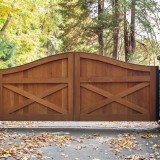How To Start A Fishing Worm Farm
A fishing worm farm can be an excellent way to make money and provide yourself with a steady supply of bait for your fishing trips. However, starting a fishing worm farm can be a bit of a challenge, especially if you've never done it before. That's why we've put together this guide to help you get started.
Step 1: Choose a location for your worm farm
The first step is to choose a location for your worm farm. The location should be well-drained and have access to plenty of sunlight. You'll also need to make sure that the location is protected from predators, such as cats and dogs.
Step 2: Build your worm bin
Once you've chosen a location, you'll need to build a worm bin. A worm bin is a container that will house your worms. The bin can be made of wood, metal, or plastic. It should be at least 12 inches deep and have drainage holes in the bottom.
Step 3: Add bedding to your worm bin
The next step is to add bedding to your worm bin. Bedding provides the worms with a place to live and eat. You can use a variety of materials for bedding, such as shredded newspaper, cardboard, or leaves.
Step 4: Add worms to your worm bin
Once you've added bedding to your worm bin, you can add the worms. You can purchase worms from a bait shop or online. When adding the worms to the bin, be sure to space them out evenly.
Step 5: Feed your worms
Worms are omnivorous, which means they will eat a variety of foods. You can feed your worms fruits, vegetables, and table scraps. Avoid feeding your worms meat, dairy, or processed foods.
Step 6: Harvest your worms
Once your worms have multiplied, you can start harvesting them for bait. To harvest the worms, simply dig into the bedding and remove the worms that you need. Be sure to leave some worms in the bin so that they can continue to reproduce.
Tips for starting a fishing worm farm
Here are a few tips for starting a fishing worm farm:
- Start small. Don't try to start a large worm farm overnight. Start with a small bin and add more worms as you gain experience.
- Be patient. It takes time for worms to multiply. Don't expect to have a large supply of worms overnight.
- Keep your worm bin clean. A clean worm bin will help to keep your worms healthy and productive.
- Monitor the temperature of your worm bin. Worms thrive in temperatures between 55 and 75 degrees Fahrenheit. If the temperature gets too high or too low, your worms may die.
- Have fun! Raising worms can be a fun and rewarding experience.

How To Grow Your Own Fishing Worms 11 Steps With Pictures

A Worm Farm For Fishing To Breed Your Own Bait Worms

How To Grow Your Own Fishing Worms 11 Steps With Pictures

Redworm Farming Backwoods Home

Diy Worm Composting Bin How To Do It Right Uncle Jims Farm

How To Grow Your Own Fishing Worms 11 Steps With Pictures

Make Your Own Worm Bait Farm How To Worms Fish

How To Start A Worm Farm

Home Made Diy Worm Farm For Fishing

How To Build A Worm Bed Start Small Farm Scout Life








